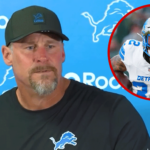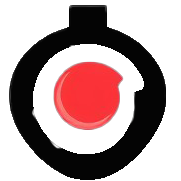Attention matters. Marketing doesn’t work unless and until consumers pay attention. As the Advertising Research Foundation summed it up, attention is the “crucial bridge” between ad delivery and ad impact. How attention works and how to measure it are front and center nowadays, with big initiatives by trade groups like the ARF, WARC, IPA, MRC, IAB and, unsurprisingly, The Attention Council, and by practitioners such as Kantar, Dentsu, Infillion, Microsoft, GroupM and Google, among others.
The study of attention across channels, creative and measurement is thorough and ongoing. This first thought piece in a three-part series here on Branding Strategy Insider complements this research with a perspective on the consumer experience. Which is all about clutter. Well before consumers can attend to ads they must deal with clutter. The challenge of clutter is navigation, as discussed here in part one. Part two is about the ripple effects of clutter, which give rise to delegation. The brand imperative is reciprocity, as outlined in part three.
This article is part of Branding Strategy Insider’s newsletter. You can sign up here to get thought pieces like this sent to your inbox.
The consumer gripe is clutter. Not ads. Consumers like ads and dislike clutter. Increasingly, though, it can be hard to separate one from the other. Ads come clad in clutter—the unfortunate but unavoidable consequence of our overfull information (AKA: knowledge) society. The shopping journey is a jaunt through clutter. What consumers encounter is mostly clutter. Clearing a way through clutter is how consumers pay attention to ads.
The related concept of the attention economy—and its corollary elements of overload, scarcity, storage, processing and technology fixes—was first articulated by Turing and Nobel awards recipient Herbert Simon in 1971 as part of a conference panel on computers and communications.
In 1988, educational psychologist John Sweller showed that learning could be improved by reducing the cognitive load involved in problem-solving. People must throttle their attention to keep from being overwhelmed by overload. It’s not getting easier.
The quantity of information and data bits vying for attention is growing multiplicatively. While the number of ads consumers are exposed to each day is far short of 10,000 (yes, I am person zero for that flawed viral figure—long story), digital media and channel proliferation mean more ads than ever. Not to mention more entertainments, SKUs and stores.
It is not in the nature of marketers to hold back. Consider virtuoso Atlanta adman Joel Babbitt who once lamented the wasted billboard space on the sides of stray dogs. When he ran marketing for the 1996 Olympics, he sparked a global outcry with his plan—ultimately vetoed—to launch a gigantic metallic billboard into geosynchronous orbit to promote the event.
Nor is it good business to hold back—to stay competitive, more requires even more in response. Without crossover synergies from multiple touchpoints, channels and outlets, ad campaigns underperform.
IDC estimates two zettabytes of data were created worldwide in 2010, versus 64.2 in 2020 and 181 projected in 2025 (up from its earlier projection of 175). But the bigger part of cognitive load is density not number. Data flows are now much richer in quality and require greater interaction and response. All of which expends more of one’s limited reserve of cognitive energy.
The solution for consumers is better navigation. At the turn of the century, some counterintuitive research had a clickbait moment with findings that too much product choice is demotivating. This academic work got a real-world test post-financial crisis. Many retailers tried to jumpstart sales by slimming down choices. Walmart made the biggest splash with its 2009 Win-Place-Show program of SKU rationalization. It did not go well. Less choice led to less sales. Two years later, Walmart did a U-turn.
Consumers are not dissatisfied with lots of choices per se. Consumers become demotivated when it is difficult to navigate lots of choices. What is true of product SKUs is no less true of advertising. As is evident time and again in surveys about advertising and satisfaction.
Few consumers want less choice. Just better ways to navigate the plethora of options. Which should be relatively easy to engineer—it’s choices nested within choices nested within choices, etc., seven at a time plus or minus two.
Consumers like shopping and ads. As long as clutter—and, as it turns out, decluttering, too—doesn’t take away all the fun. Hence, the brand imperative of better navigation.
On The Radar
Clutter, however, is like weeds, about which George Washington Carver once said, “A weed is a flower growing in the wrong place.” Clutter is information, too, just not relevant or useful in the moment. As such, it gets in the way, competes for attention and detracts from the experience. Consumers only have so much attention to give. Clutter comes from the mismatch between cognitive capacity and the quantity of information consumers must sort through to find what they want.
Cognitive capacity is limited. This is old news, with enduring insights. The post-WW2 surge of computing spurred a lot of research into the best ways to integrate computers with people. Information theory was an originating idea in the budding field of cognitive psychology (as it butted heads with behavioralist orthodoxy), from which came George Miller’s 1956 paper on the cognitive limits of working memory, “The Magical Number Seven, Plus or Minus Two.” Seven is our real-time cognitive capacity. The influence of Miller’s paper is so great that it has its own Wikipedia page.
Contributed to Branding Strategy Insider By Walker Smith, Chief Knowledge Officer, Brand & Marketing at Kantar
Branding Strategy Insider is a service of The Blake Project: A strategic brand consultancy specializing in Brand Research, Brand Strategy, Brand Growth and Brand Education
FREE Publications And Resources For Marketers
Post Views: 22










